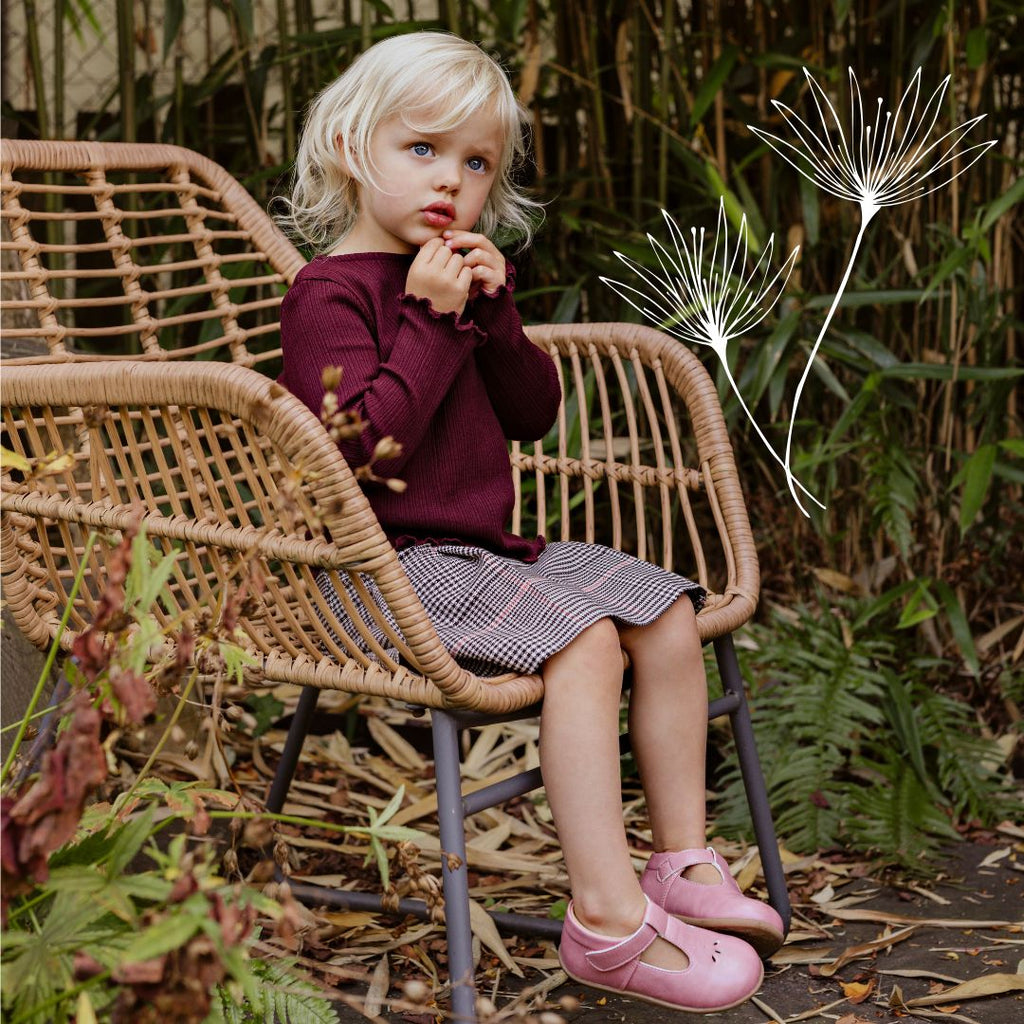When it comes to baby footwear, finding the perfect pair of shoes that combine style, comfort, and functionality is key. Enter the T-strap shoe – a timeless design that has been a staple for generations. These dainty yet practical shoes are perfect for babies learning to crawl, cruise, or take their first steps. With their secure fit, adorable style, and versatility, baby T-strap shoes are a must-have in any little one's wardrobe.
In this blog, we'll explore the charm of T-strap shoes, why they’re perfect for your baby, and the cutest styles to look out for!
What Are T-Strap Shoes?
T-strap shoes are defined by a distinct “T”-shaped strap that runs down the center of the shoe and across the ankle. This design ensures the shoe stays securely on your baby's foot while allowing for flexibility and breathability. The rounded toe provides ample room for tiny toes, making them comfortable and supportive for little feet.
These shoes are ideal for both everyday wear and special occasions, offering a vintage-inspired look that never goes out of style.
Why Choose T-Strap Shoes for Your Baby?
1. Secure Fit
Babies are always on the move, and keeping shoes on their feet can be a challenge. T-strap shoes provide a secure fastening that helps prevent slipping off, even during the most active play sessions.
2. Easy to Put On
The buckle, snap, or Velcro closure makes it simple to slip T-strap shoes on and off. This is a huge advantage for parents who want hassle-free dressing time.
3. Supportive Design
T-strap shoes are designed to offer good support for little feet, which is especially important for early walkers. The structure helps stabilize the foot while allowing natural movement.
4. Breathability
The open design of the T-strap allows for better air circulation, keeping little feet cool and comfortable.
5. Timeless Style
T-strap shoes have a classic, vintage appeal that pairs beautifully with a variety of outfits. Whether you’re dressing your baby for a casual day or a formal event, these shoes add an element of charm.
Styles of Baby T-Strap Shoes
There’s a wide variety of baby T-strap shoes available, from soft-soled pre-walker shoes to more structured designs for early walkers. Here are some adorable styles to consider:
1. Classic T-Strap Shoes
These shoes are perfect for special occasions or everyday wear. Crafted from soft leather, they provide durability and comfort. Available in neutral shades like white, black, or brown, they pair effortlessly with any outfit.
Best for: Family gatherings, church, or photo sessions.
2. Soft-Sole T-Strap Shoes
For babies who are still crawling or just learning to stand, soft-soled T-strap shoes are ideal. They allow for natural foot movement and help babies feel the ground beneath them, aiding balance and coordination.
Best for: Babies who aren’t yet walking or are just starting to cruise.
3. Patent T-Strap Shoes
These shiny shoes are perfect for dressing up! Patent leather or faux patent gives a polished, glossy finish that adds a touch of sophistication. They’re a favorite for holidays, weddings, or formal events.
Best for: Special occasions like weddings, birthdays, or holidays.
4. Embellished T-Strap Shoes
For a playful twist, look for T-strap shoes with embellishments like bows, scalloped edges, or tiny floral accents. These details add a whimsical, girly charm that makes the shoes extra special.
Best for: Adding a fun touch to everyday outfits.
5. Velvet or Suede T-Strap Shoes
For a touch of luxury, velvet or suede T-strap shoes offer a plush, soft texture. These are particularly adorable in rich, deep colors like burgundy, navy, or forest green.
Best for: Fall and winter outfits or festive occasions.
How to Style Baby T-Strap Shoes
For Everyday Wear
-
Outfit: Pair soft leather T-straps with cozy leggings, a onesie, and a knit cardigan for a cute and comfortable look.
-
Tip: Neutral colors like beige or white work well for versatile styling.
For Special Occasions
-
Outfit: Match patent T-strap shoes with a smocked dress, tights, and a bow headband for a picture-perfect ensemble.
-
Tip: Choose metallic shades like gold or silver for a festive touch.
For a Vintage Look
-
Outfit: Style classic brown or tan leather T-straps with a gingham dress or bloomers for a timeless, vintage vibe.
-
Tip: Add frilly socks or lace-trimmed ankle socks to complete the look.
Tips for Choosing the Right T-Strap Shoes
-
Measure Correctly: Babies' feet grow quickly, so ensure you measure their feet before purchasing.
-
Check Materials: Opt for breathable, soft materials like leather or high-quality cotton.
-
Flexible Soles: For early walkers, flexible soles are essential to allow natural movement.
-
Secure Closures: Look for buckles, Velcro, or snaps that are easy to fasten and adjust.
-
Comfort First: Prioritize comfort over style. A soft interior and rounded toe are key features for happy feet.
Final Thoughts
Baby T-strap shoes are a delightful combination of style, comfort, and functionality. Their secure fit and classic design make them perfect for everything from playdates to family photos. Whether you prefer the elegance of patent leather, the simplicity of soft-soled styles, or the charm of embellished details, there's a perfect pair out there for your little one.
These shoes aren't just practical – they create memories, complete outfits, and offer a glimpse of timeless charm. So go ahead and add a pair (or two!) of T-strap shoes to your baby’s wardrobe. After all, the tiniest feet deserve the cutest shoes!


